Roland TB-303 Plugins: How to recreate the 303 sound
303 plugins can recreate the classic acid station.
It was originally designed to simulate a bass guitarist. However, the infamous Roland TB-303 has had as much of an impact on modern music culture as any instrument could.
This unlikely hero was only produced from 1981 to 1984, with 10000 units ever made. Ironically, it was the characteristics that made the 303 a commercial failure that would later make it a global icon.
The pattern-based monosynth with its non-resonating filter might not sound much like a bass guitar. However, it sure can cut through even the noisiest of mixes, and the slide and accent controls give the 303 such a distinctive sound.
Which are the best Roland TB-303 plugins?
Although the 303 probably has more clones and plugin emulations than any other synth, there are always those we prefer over others. We’ll discuss a few plugin versions, check out where the 303 has been famously used, and share some tips for replicating the sound more accurately from your DAW.
Roland Cloud TB-303
Capturing all the hallmarks and nuances of the vintage 303, the Roland Cloud TB-303 delivers the most authentic solution for getting that classic sound we know and love.
The interface and features appear in a very similar way to the original 303, with a few nifty extras here and there. The sequencer is easy to get your head around. Meanwhile, features like shuffle and multiple playback modes give you some interesting creative potential.
This plugin really begins to shine once you start adding overdrive or distortion to the signal chain, as the accents and slides are reproduced in a most pleasing way.
- More from Roland

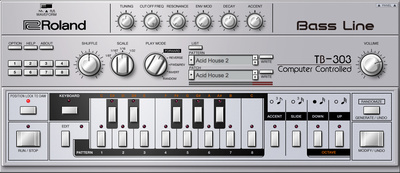
D16 Group Phoscyon 2
With a design philosophy set on expanding the creative possibilities of the original 303, D16’s Phoscyon 2 provides a plethora of additional features in areas you didn’t know you needed.
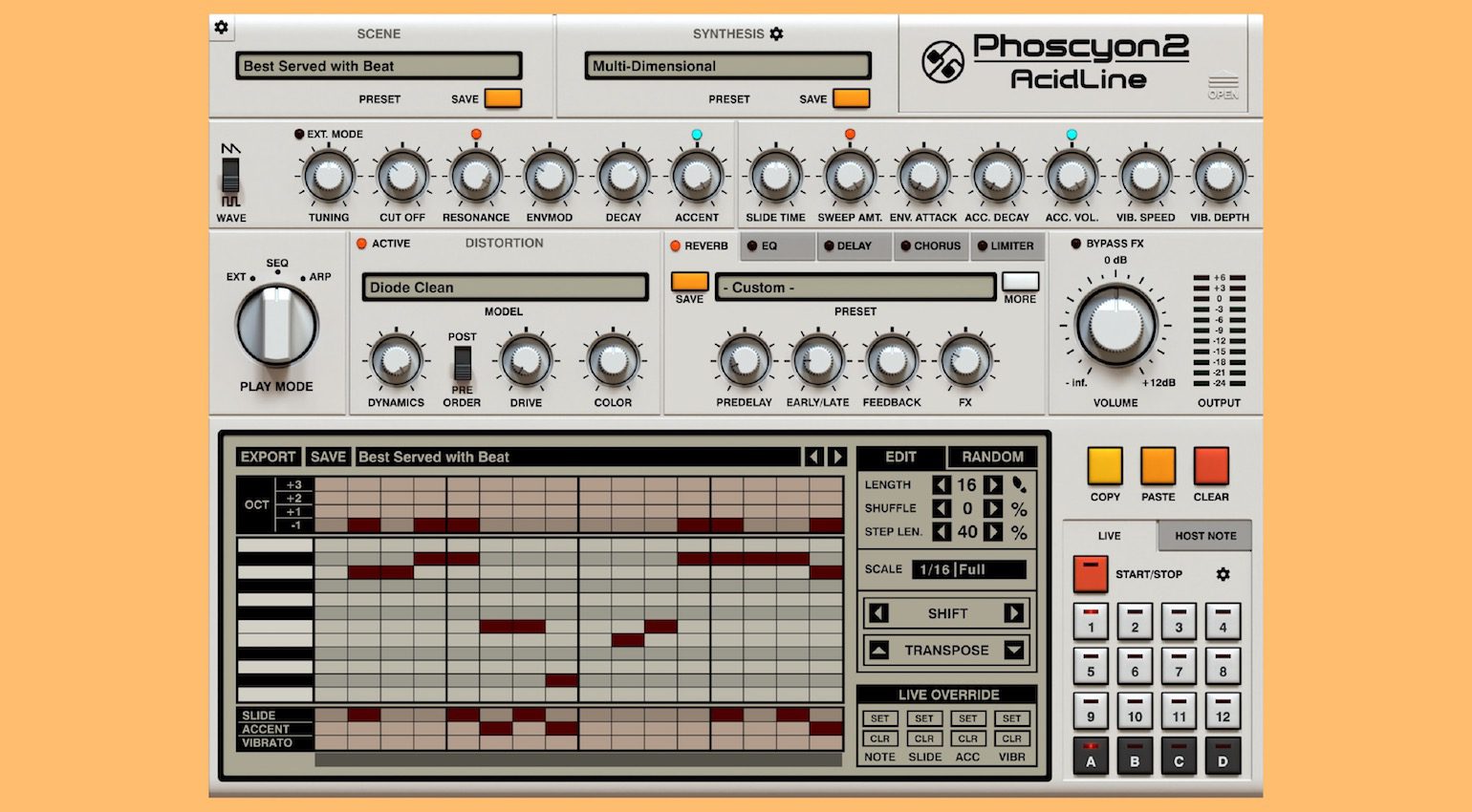
The sound produced is convincing enough, especially in the low and mid-range. Moreover, the extra functionality in the arpeggiator, sequencer, and effects sections makes it possible to envisage creating sounds beyond the realms of house, acid, and techno music.
The user interface might be a step away from the original 303. However, the Phoscyon 2 gives you the feeling you could easily experiment and make mistakes while using it – which is more than you could ask from most softsynths.
- More from D16 Group

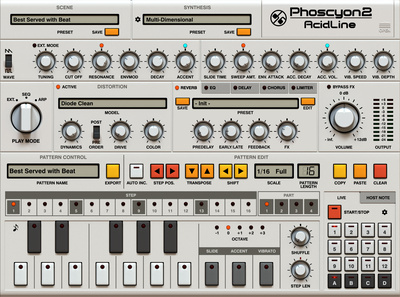
AudioRealism Bass Line 3
In some ways, AudioRealism has carried the torch from where Propellerhead Rebirth RB-338 began back in 1998. Although Rebirth was later discontinued, AudioRealism remains focused on developing some of the most convincing software recreations available.
Like any softsynth, the ABL3 won’t pop out of the mix with the same degree of analogue “knock” as the hardware does, but it matches it sonically in almost every other department.
The controls respond incredibly well to even the most subtle or graduated automation. Furthermore, with a good-quality reverb or distortion in your effects chain, it becomes virtually indistinguishable from the original.
- More about Audiorealism
The Roland TB-303 in popular music
Initially, the 303 was used by artists in the early 1980s with the prescribed method of imitating a bass guitar’s role. After that, it was used more melodically to generate loop-based leads in the Newcleus track, Jam On It from 1984.
From the mid-80s, the 303 was used and abused in unorthodox ways throughout house music. Although many artists were exploring the 303 at this time, it was the debut EP from Chicago-based group Phuture that would become an iconic blueprint for electronic music.
The acid approach to the 303 would follow the global warehouse movement throughout the late 80s and early 90s with tracks like Flow Coma from the Manchester scene’s 808 State. Daft Punk truly brought it to the mainstream in 1997 on Da Funk from their famous debut album, Homework.
Since then, it branched out into many electronic genres like goa and techno. However, Massive Attack‘s Protection from 1994 remains one of its most memorable epitaphs. More recently though, we’ve heard the 303 contextualized in interesting ways by artists like Nicole Willis and Acid Arab.
Recreating the classic 303 sound
At its core, the 303 relies on the mechanical quality of its sequencer and its punchy but limited volume envelope. It’s a non-keyboard triggered synthesizer, which requires a different approach. Familiarise yourself with the expression controls for manipulating the sound throughout the song.
- Even if you’re the king or queen of DAW automation curves, chances are you’re going to want a controller for this. The Novation Launchkey will do the trick nicely.
- This instrument will not do the work for you. Extend the range of your programming outside of a single octave. Your basslines and leads will be more expressive.
- Define the pattern by adding slides and accents. See if you can get them to play off the downbeat, and create the push-and-pull effect of a classic 303 groove
- As you build your track around this pattern, decide what role the 303 will play. This will determine the length of the pattern and if it alternates during the track.
- The 303 loves reverb too, so send it to your favourite plugin – an AMS-style reverb works wonders here
- Once your sequencing is complete, you can automate the various controls in several passes. This is where the performance comes in. Try and access the expressive tone colour of the 303 with its filter.

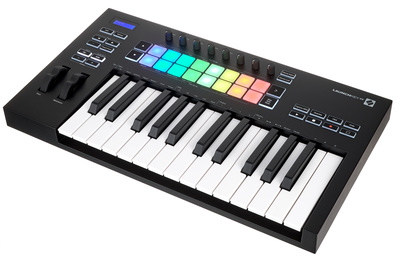
More about the Roland TB-303:
- Owning a TB-303
- 303 Clones
- Acid Voice, a 303 resource
- All about Roland
- Everything vintage
Videos:
*Note: This article contains promotional links that help us fund our site. Don’t worry: the price for you always stays the same! If you buy something through these links, we will receive a small commission. Thank you for your support!
5 responses to “Roland TB-303 Plugins: How to recreate the 303 sound”

You are currently viewing a placeholder content from Facebook. To access the actual content, click the button below. Please note that doing so will share data with third-party providers.
More InformationYou are currently viewing a placeholder content from Instagram. To access the actual content, click the button below. Please note that doing so will share data with third-party providers.
More InformationYou are currently viewing a placeholder content from X. To access the actual content, click the button below. Please note that doing so will share data with third-party providers.
More Information
 3,7 / 5,0 |
3,7 / 5,0 | 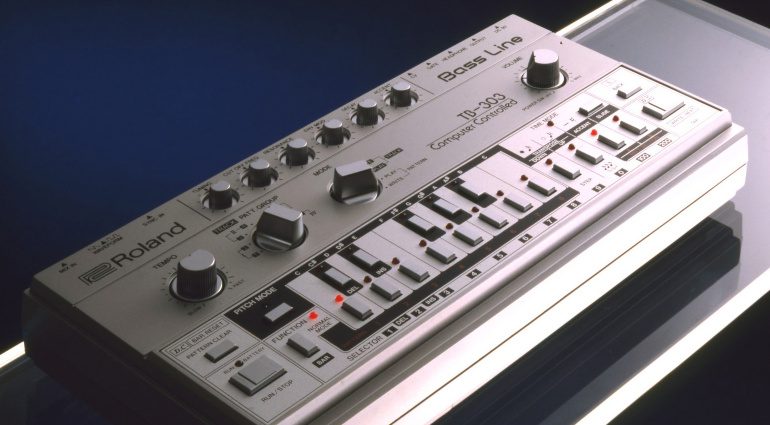

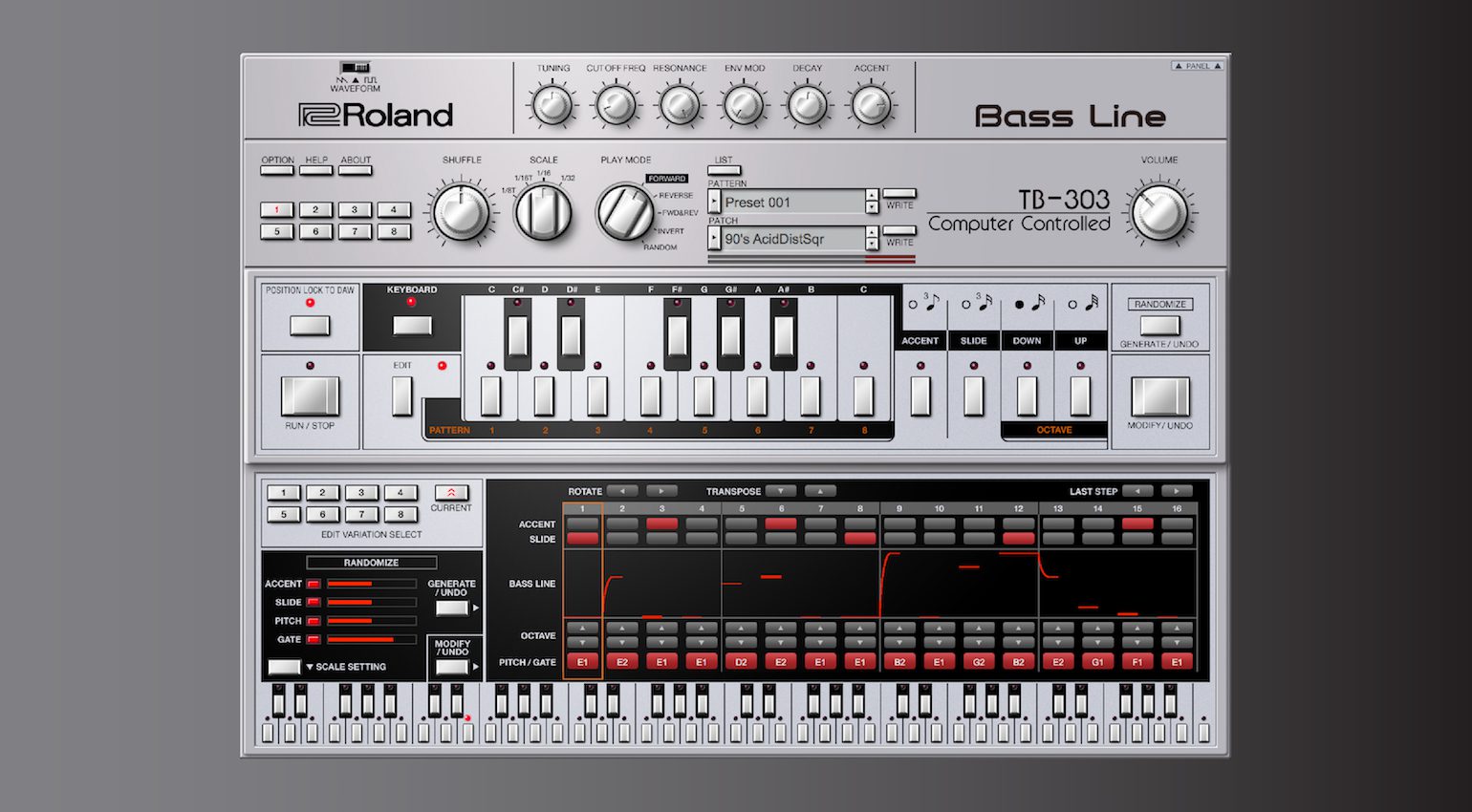

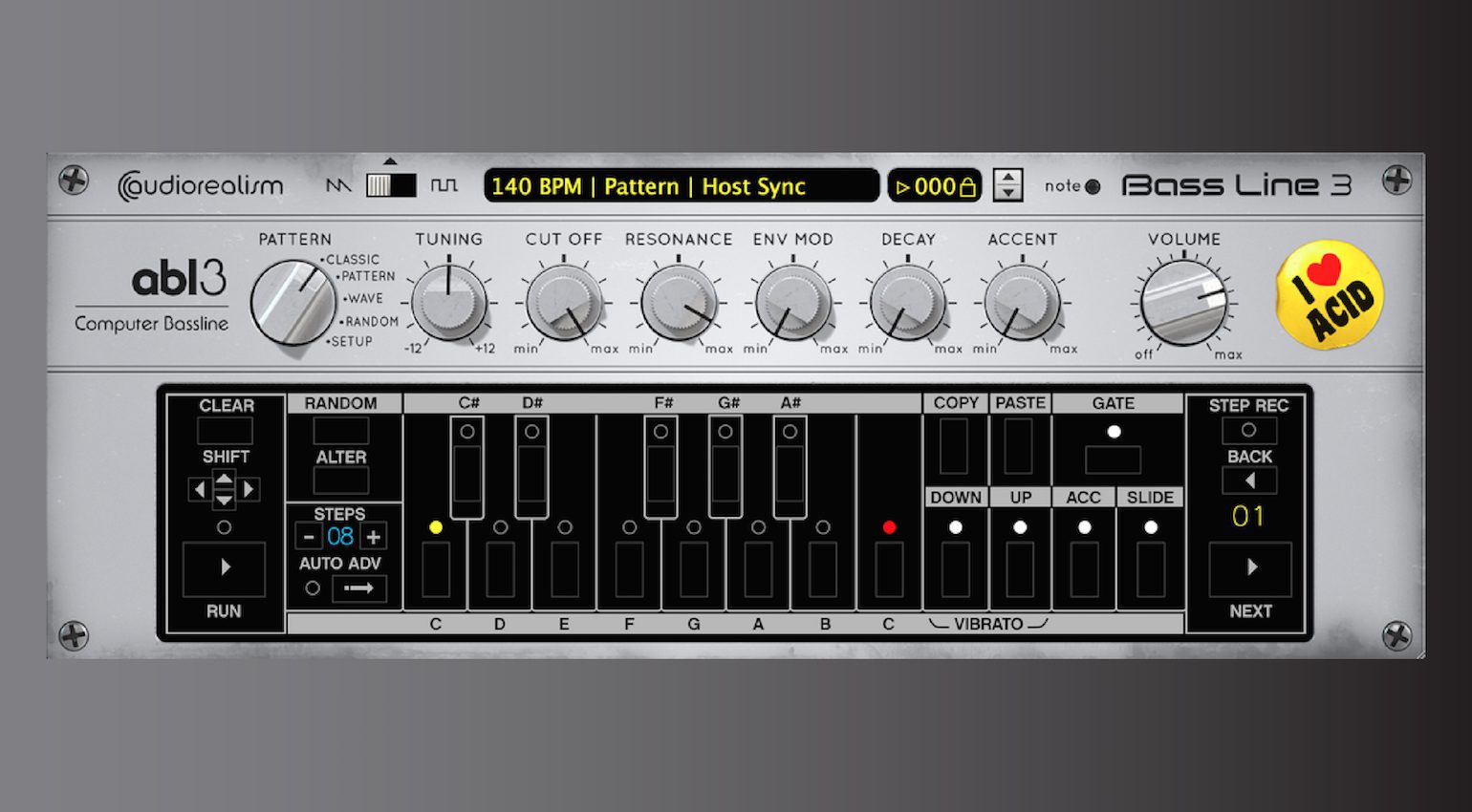
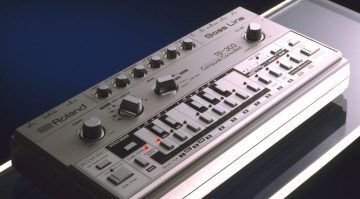

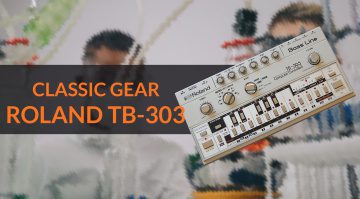


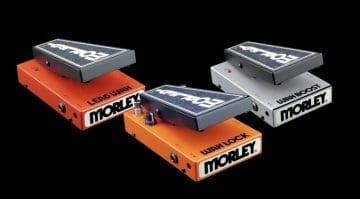
Great post.
That Massive Attack track brings back memories. Beautiful.
Personally, I would’ve liked to see at least an “honourable mention” to Propellerhead’s Rebirth. Some of us out here still miss it and are annoyed we didn’t squirrel away backup copies. So weird that Roland didn’t care about it for over a decade until it got ported to iOS.
There is way’s to run rebirth on modern PC’s, but It’s hard to find online rebirth software. I still have have one laptop with win 10 where I made rebirth to run. Rebirth pros are easy to use interface, slides and accents. Coins are outdated GUI and possibilities. Also it lacks real 303 sound. Slides and accents in other hand are more accurate than synth imitation.
The characteristic I most often find is missing from both hardware and software clones, is what I can best describe as the ‘dark woooah’ sound you get when the Cutoff Freq and Env Mod are all the way down, and the Accent is almost all the way up. Many just don’t go dark enough. Even 303’s are not immune; my original TB303 went very ‘dark and low’ with its ‘wooaah’ nuance but my next 303 many years later didn’t. This was frustrating.
However, there is a cutoff trimpot inside the original TB303 which allows a darker tone to be achieved, without adversely affecting the high end squelch; once I discovered that, I was able to make my second 303 sound just like my first from years earlier. The Bassbot TT303 and Behringer TD3 also seem to come out of the factory not dark enough, but both have the all-important trim pot associated with darkening / lowering the Cutoff even further (VR1 for the TD3).
I don’t think I’ve come across any software which has an additional setting for this – which could be why none of them quite get there 100% (in my biased opinion !!)
Hello, I have never seen or held an original Roland TB 303.
I know the Behringer clone.
Is the original really the same “junk” and light little plastic brick – like the Behringer?
I don’t mind that…
But I always thought it was a solid metal house.
I heard someone say no. Can you write me about this? Thanks!
Anyway, I bought and use both the Arturia and D16 versions. Both are great.